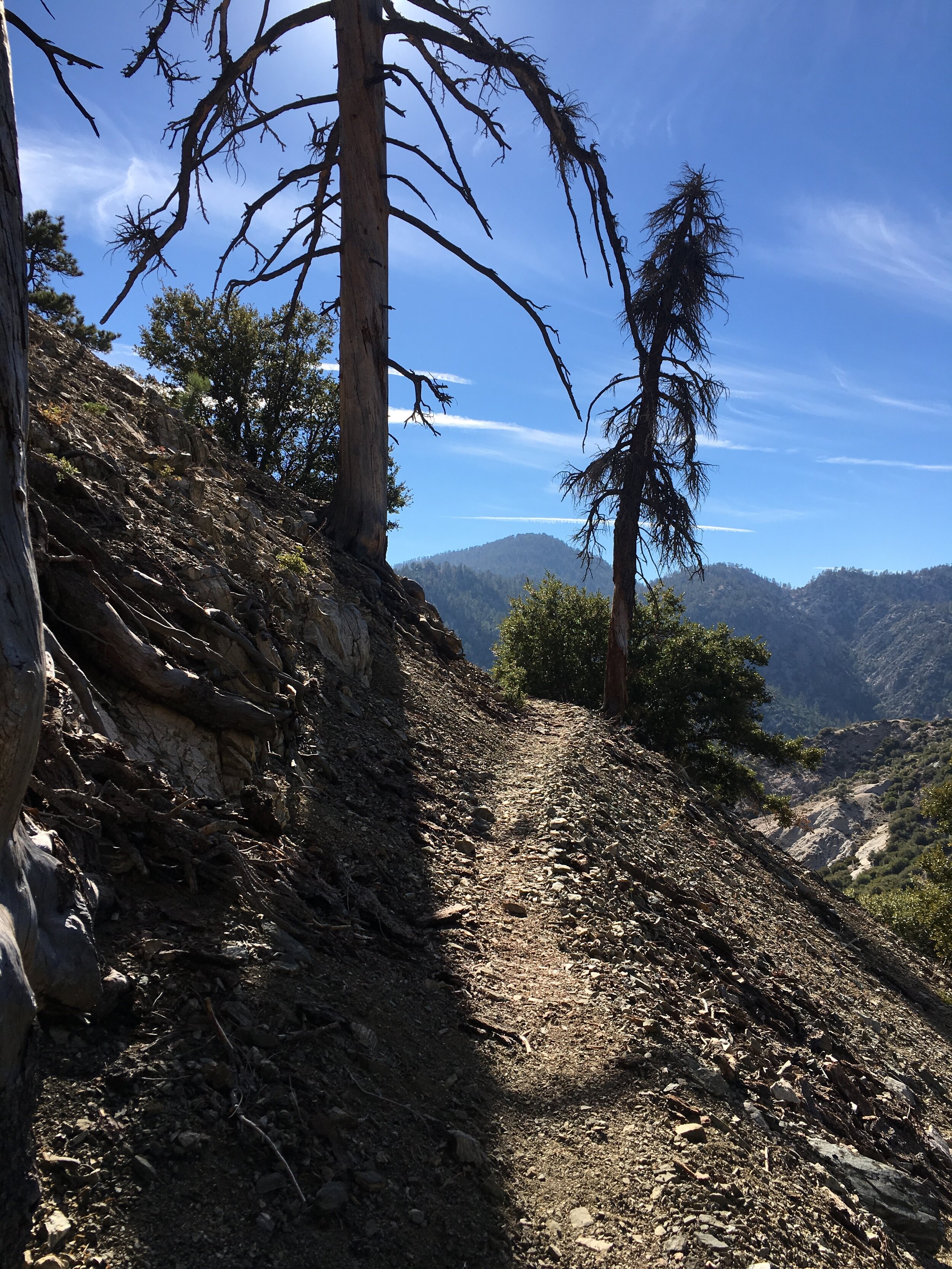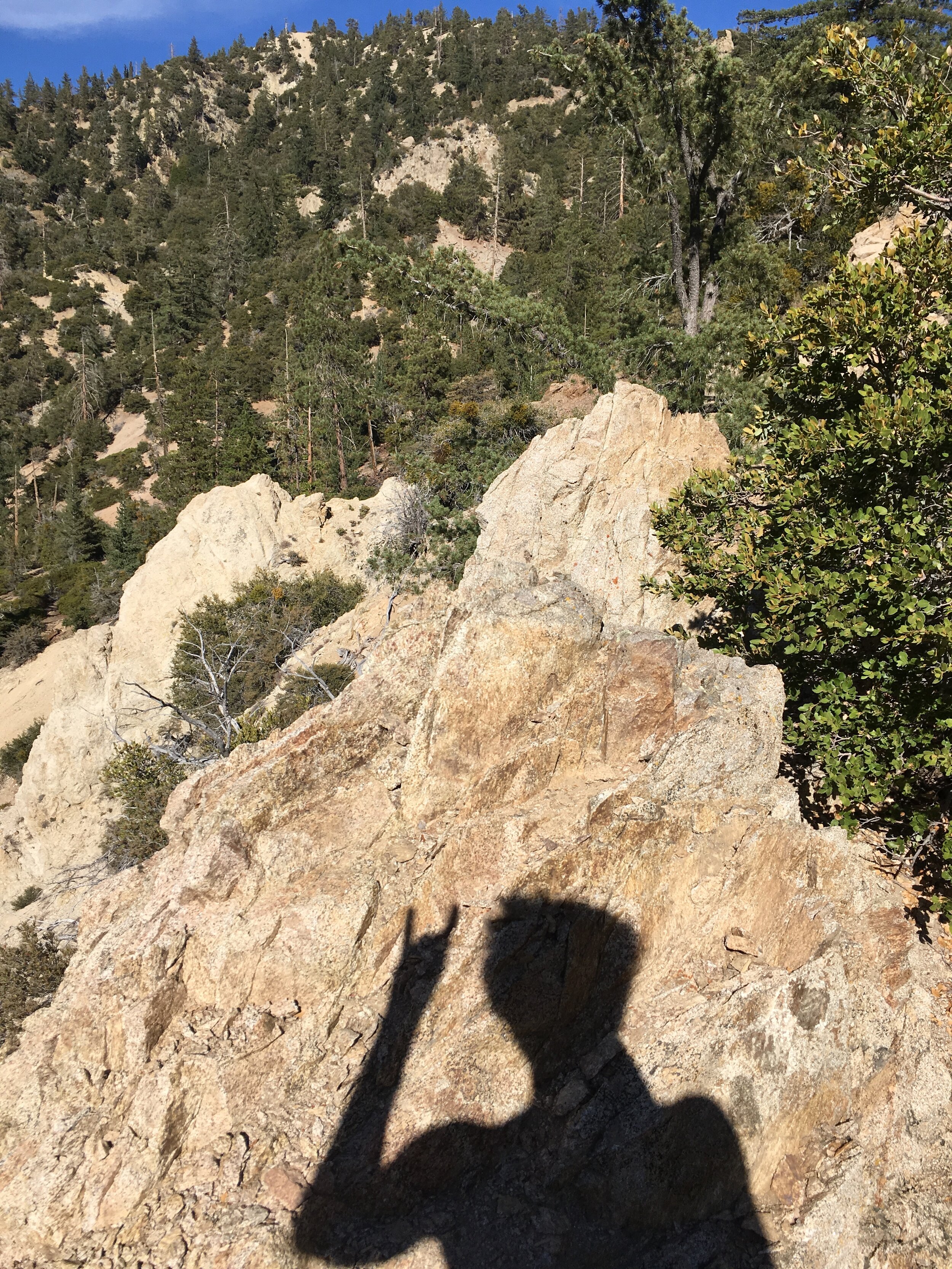by Chris Parr
Over twice the size of the city of Los Angeles, rests a massive, protected forest with a variety of unique terrain.
In the 1870s, Southern California authorities were on the hunt for Tiburcio Vasquez, a notorious bandito who robbed thousands of dollars from jewelry stores, markets, and stages. Vasquez frequently fled the city by escaping into the San Gabriel mountains. (source: KCET)
Naked Chris climbing a tree. Photo Harris Dirnberger
The San Gabriel mountains traverse between the inland Mojave desert and the Los Angeles basin for 68 miles.
In 1877, adventurer John Muir trekked through these mountains and described them as “mostly rugged, thornily savage,” a nod to the difficult terrain and steep peaks that the mountains have to offer. (Source: Sierra Club)
(Photo Daniel Medina)
Some time later, the Angeles Crest Highway was built, which planted a 66-mile long highway right through the mountains.
In 1908, the area was named the Angeles National Forest and was regulated by the U.S. Forest Service. Their goal was not to preserve the wilderness but rather to “maintain the long-term viability of the mountain’s resources,” according to the US Forest Service Chief, Gifford Pinchot. (Source: KCET)
(Photo Duke S.)
Now, as a National Forest with a highway for easy access, the Angeles Forest is used for recreation, hiking, picnicking, and, just as it was used in 1870: escape.
Chris’s Experience
From my old apartment in the middle of Hollywood, it took only about 45 minutes to drive to the edge of the National Forest. When I first moved to California, I remember someone boasting about how, on a winter day, you can surf in the morning and ski in the evening of the same day. Despite this, few people I talk to in Los Angeles about the Angeles Forest have ever gone.
I’ve been to Angeles Forest a few times, not counting the times I blasted through it driving to and from the desert on the other side. The one thing I will never forget is my sheer disbelief upon ascending the first mountain in the National Forest. When I saw the other side, I couldn’t believe the sight of this vast untouched land right next to the second-largest urban region in the US. I think this picture sums it up best…
(Photo Al Seib / Los Angeles Times)
My desire to trip to the Angeles Forest was a result of being overwhelmed by city life. Los Angeles can definitely consume you. One thing I thought would help: nature. It worked.
I’ve stayed at the Buckhorn Campsite multiple times, which I highly recommend, as there is an amazing hiking trail at the bottom of the site. It’s called Burkhart Trail. This trail winds its way down a creek, where there is an intimate waterfall to the left, with a rope to climb down. About 2 miles down, Burkhart connects to the PCT. This I cannot recommend enough. The views are astonishing and the trail rides the ridge so you can really soak it all in.
As for the camping availability, it depends on the time of year you go. I’ve been in December and not seen a single person, and in June where the lot is full. If going during a warmer time of year, I recommend you get to a site early and reserve your spot. Pay the fee, grab a ticket and nail it to your post so nobody snags it from you.
One thing I did not expect is the winter weather. WINTER weather. Being located so close to Los Angeles, I thought it would be slightly colder. Nope. On my way driving up, almost to Buckhorn Campground I was halted by about 6 feet of snow and road closed signs. So, this trip I stayed at Chilao Campground, down the hill a bit. There was no snow here but the temperatures dropped below 10 degrees overnight. It made for a rough night. But again, nobody was in sight so the escape was real. The nearby Silver Moccasin Trail made for a good day hike. Lots of sage to snag to make your car smell nice and scare away the demons.
One thing I can tell you is that I will keep returning to the Angeles Forest due to its ease to get to, the views, and the escape from the city. There is nothing more rejuvenating.






